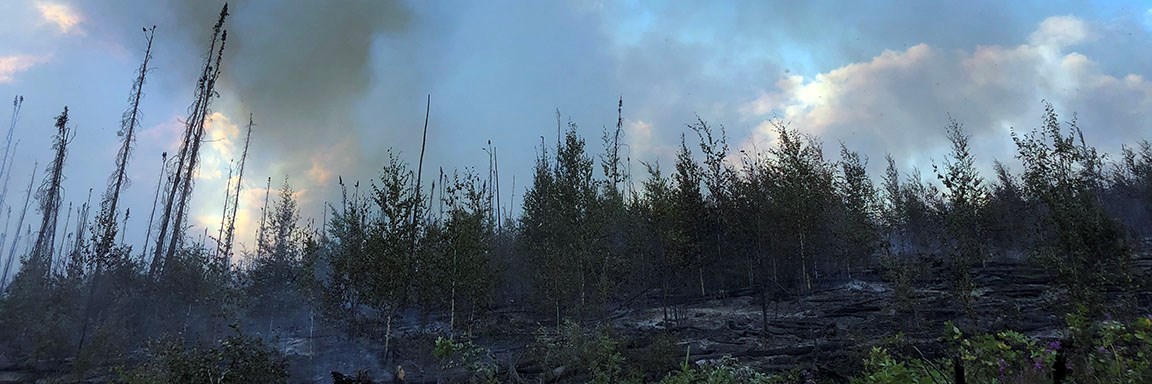
AFS photo/J. Budd
Monitoring is all about having "boots on the ground." During the life span of a fire, fire professionals map it and record fire behavior information. After a fire or a fuels reduction project, staff study the vegetation, fuels, and wildlife habitat to determine impacts and effects.
For instance, in 2004 Denali National Park and Preserve fire staff created defensible space around headquarters structures in order to reduce the risk of property damage and improve safety for employees, visitors, and fire crews. But even before the project started, fire managers asked, "Based on the project prescriptions, will we reduce the fire risk to Denali?" In order to answer the question, monitoring project objectives were drafted and hazard fuels plot were designed to accurately measure the objectives. Fire management installed monitoring plots and collected data such as the number of trees by species and fuel loads one year prior to the fuels reduction project and one year after. The data was used to assess potential changes in fire behavior and fire spread based on fuels treatments. After the data was collected and analyzed, fire managers evaluated whether the project successfully reduced fire behavior potential in the treatment areas. Information gained was also used to determine best methods for hazard fuels reduction projects at Alaska National Park Service backcountry cabins.
For instance, in 2004 Denali National Park and Preserve fire staff created defensible space around headquarters structures in order to reduce the risk of property damage and improve safety for employees, visitors, and fire crews. But even before the project started, fire managers asked, "Based on the project prescriptions, will we reduce the fire risk to Denali?" In order to answer the question, monitoring project objectives were drafted and hazard fuels plot were designed to accurately measure the objectives. Fire management installed monitoring plots and collected data such as the number of trees by species and fuel loads one year prior to the fuels reduction project and one year after. The data was used to assess potential changes in fire behavior and fire spread based on fuels treatments. After the data was collected and analyzed, fire managers evaluated whether the project successfully reduced fire behavior potential in the treatment areas. Information gained was also used to determine best methods for hazard fuels reduction projects at Alaska National Park Service backcountry cabins.
Last updated: December 20, 2018
